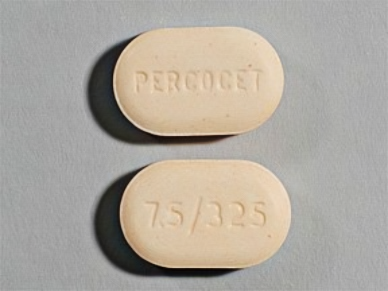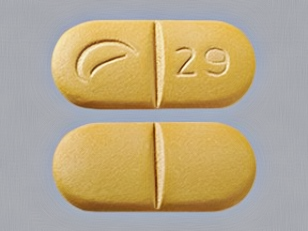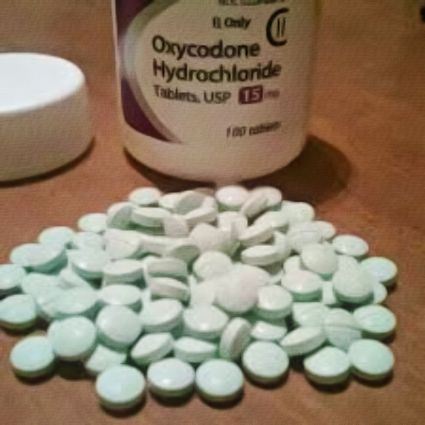What Are the Most Common Oxycodone Interactions?
Oxycodone has been around since about 1916, but it was not approved to be used in the United States until 1991. Though the drug’s roots stem from Germany, there is no arguing the level of success and popularity that oxycodone has reached in America. Almost three decades later and, “it has become one of the most commonly prescribed drugs in medical practice.” The effective drug can often take on negative connotations due to its powerful nature. Take a closer look at some of the most popular drug combinations that use oxycodone today.
Oxycodone Acetaminophen
Oxycodone and Acetaminophen is a well-known combination in the medical field when managing pain. The opioid treatment is utilized when pain and discomfort become intolerable. Percocet is an example of a prescription brand name that delivers both oxycodone and acetaminophen. Acetaminophen & oxycodone interactions are typically known for relieving pain as well as inducing feelings of euphoria and relaxation. Lightheadedness, drowsiness, nausea, and vomiting are some of the most common side effects of taking a prescription drug such as Percocet.

When looking at both halves of the successful pain relief combination, the two drugs have different elements unique to them. For instance, acetaminophen is used to treat both fever and pain, but it does not possess the same habit-forming nature as its counterpart. Narcotic analgesics is the group of medicines that oxycodone belongs to. Since oxycodone works directly with the central nervous system it comes with an increased risk of becoming both physically and mentally dependent upon the drug. People who have to use oxycodone for an extended period of time must be mindful of the dangers that can often come with it. Addiction and withdrawal symptoms are two potential side effects of using oxycodone. Looking back at acetaminophen, even though it does not present as a threat as far as addiction goes, if used for too long, it could be harmful and eventually cause problems such as liver damage. Like most medications, the potential side effects of oxycodone and acetaminophen may sound daunting or scary, but it is important to remember that when used correctly, it is an excellent solution for pain management.
Michigan Medicine has put together a gallery so viewers can see and understand the measuring and scoring of Percocet. On the other hand, “Each oxycodone and acetaminophen tablet USP 5 mg/325 mg contains oxycodone hydrochloride 5 mg (equivalent to 4.4815 mg oxycodone) and acetaminophen 325 mg. It is available as a round, white scored tablet debossed with a 512 identification number.” The numbers indicate the level of strength of the medication. Pills that are scored with “M523” will contain 10 mg of oxycodone hydrochloride and acetaminophen 325 mg. Knowledge and understanding are essential when dealing with these types of treatments.
Ibuprofen / Oxycodone

Ibuprofen is one of the most widely used and known anti-inflammatory drugs in the world. However, depending on the situation, it sometimes isn’t enough. Medical professionals who work with oxycodone are probably already very familiar with Combunox™. The medication is a “fixed-dose combination of oxycodone 5 mg and ibuprofen 400 mg”. The drug first hit the market around 2006 and has developed a reputable and trustworthy reputation since. The potent nature of the semisynthetic opioid analgesic combined with ibuprofen make it an excellent alternative for a short-term management plan to relieve moderate, acute, and severe pain. The Mayo Clinic explained the extensive side effects that could potentially arise from taking Combunox™. You can also go here to fully read up on everything behind this unique combination.
Oxycodone Hydrochloride
Opioids are considered one of the strongest forms of pain medication, and, as a result, many medical professionals have developed drug combinations centering around them. ROXICODONE® is another example of just that. The opioid analgesic is a tablet that is taken orally that contains “15 mg or 30 mg of oxycodone hydrochloride USP.” What sets this combination aside from its competitors is its quick-acting nature. ROXICODONE® is an immediate release pill. It is extremely beneficial, but due to its fast-paced reputation, it is essential that patients are extremely careful to take the correct dosage.

Oxycodone hydrochloride is another less common form of medicine for pain. This combination should only be utilized when absolutely necessary. With that being said, it is most often used in the case of patients with cancer as well as post-operative situations. The National Cancer Institute defines oxycodone hydrochloride as, “a drug used to treat moderate to severe pain. It is made from morphine and binds to opioid receptors in the central nervous system. Oxycodone hydrochloride is a type of analgesic agent and a type of opiate.” When looking at the specifics, “Each 5ml contains oxycodone hydrochloride 5 mg (equivalent to 4.5 mg of oxycodone base)”. It is important to remember that this particular dosage and pairing works best for patients in need of extended pain relief.
Oxycodone and Alcohol
Oxycodone and alcohol are not a good match, to say the least. Patients who are taking any amount of oxycodone should not be consuming alcohol. As many are already aware of, the dangers of alcohol are grave when they are in isolation, and adding to opioids into the mix would be a recipe for a disaster. This is a very dangerous matter that unfortunately takes the lives of many.

Mixing alcohol with something such as oxycodone could lead to slowing down someone’s breathing rate or causing them to enter a state of delirium. No one ever wants to find themselves in this situation. Combining alcohol with opioids puts everyone’s life at risk. Nausea, vomiting, erratic blood pressure, changes in heart rate, and coma are some of the other unfortunate side effects that can result from intermingling these substances. By staying informed, educated, and following all of the doctors’ orders, oxycodone is a safe and successful solution to managing pain and staying safe.
Sources:
U.S. National Library of Medicine (NCBI)
The Mayo Clinic
American Addiction Centers
Michigan Medicine
DailyMed
The Medical Letter
Food and Drug Administration
University of Pennsylvania
emc

